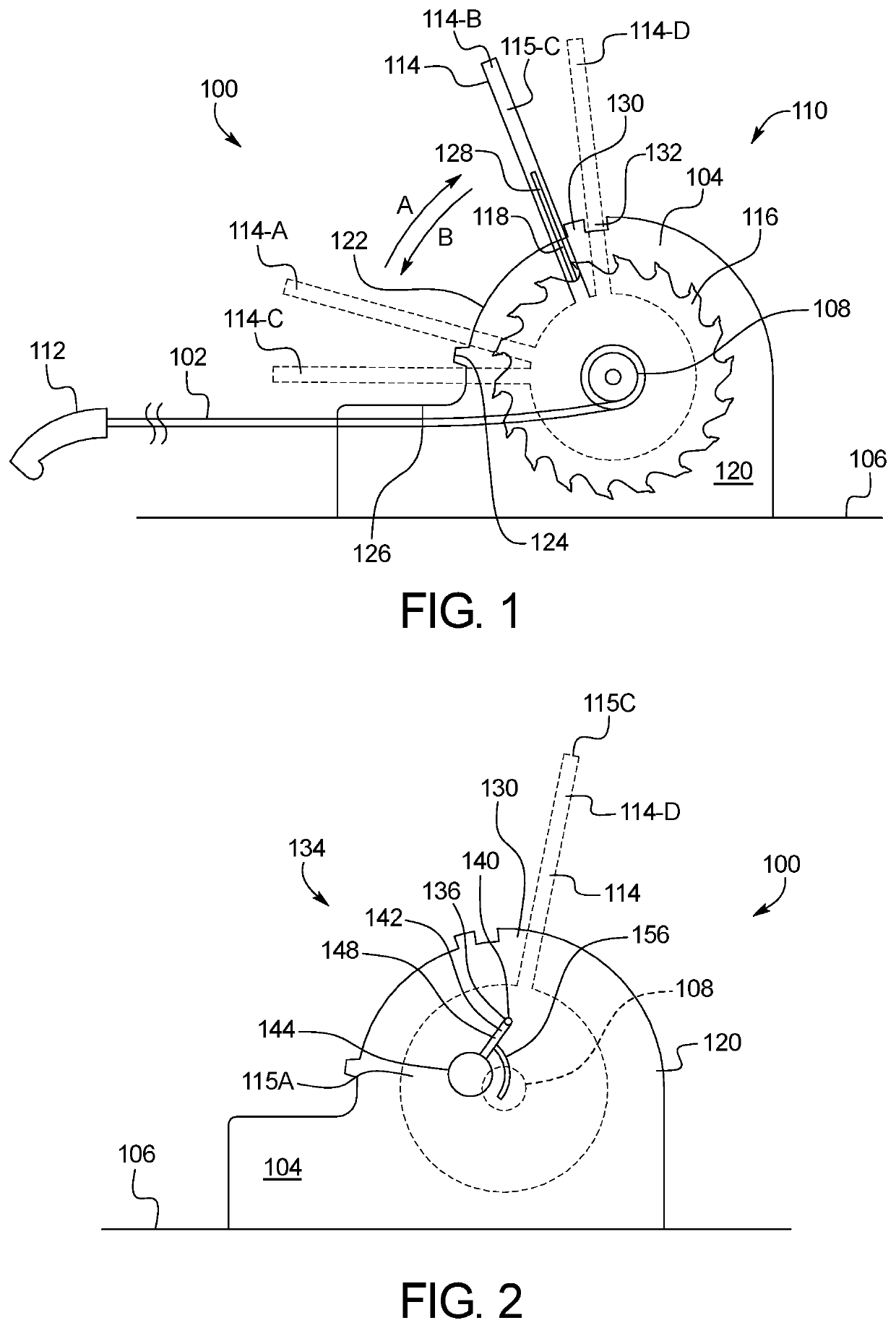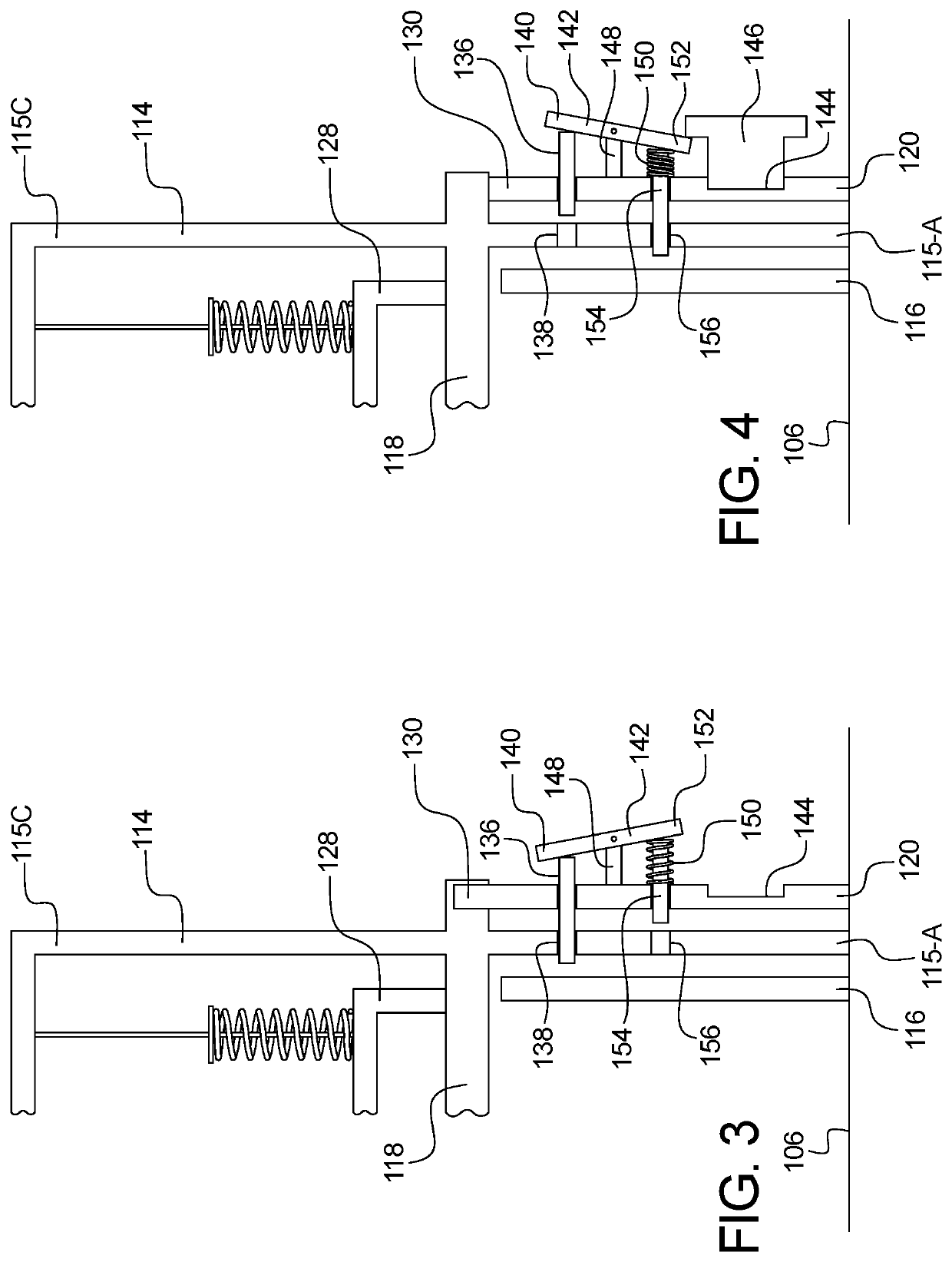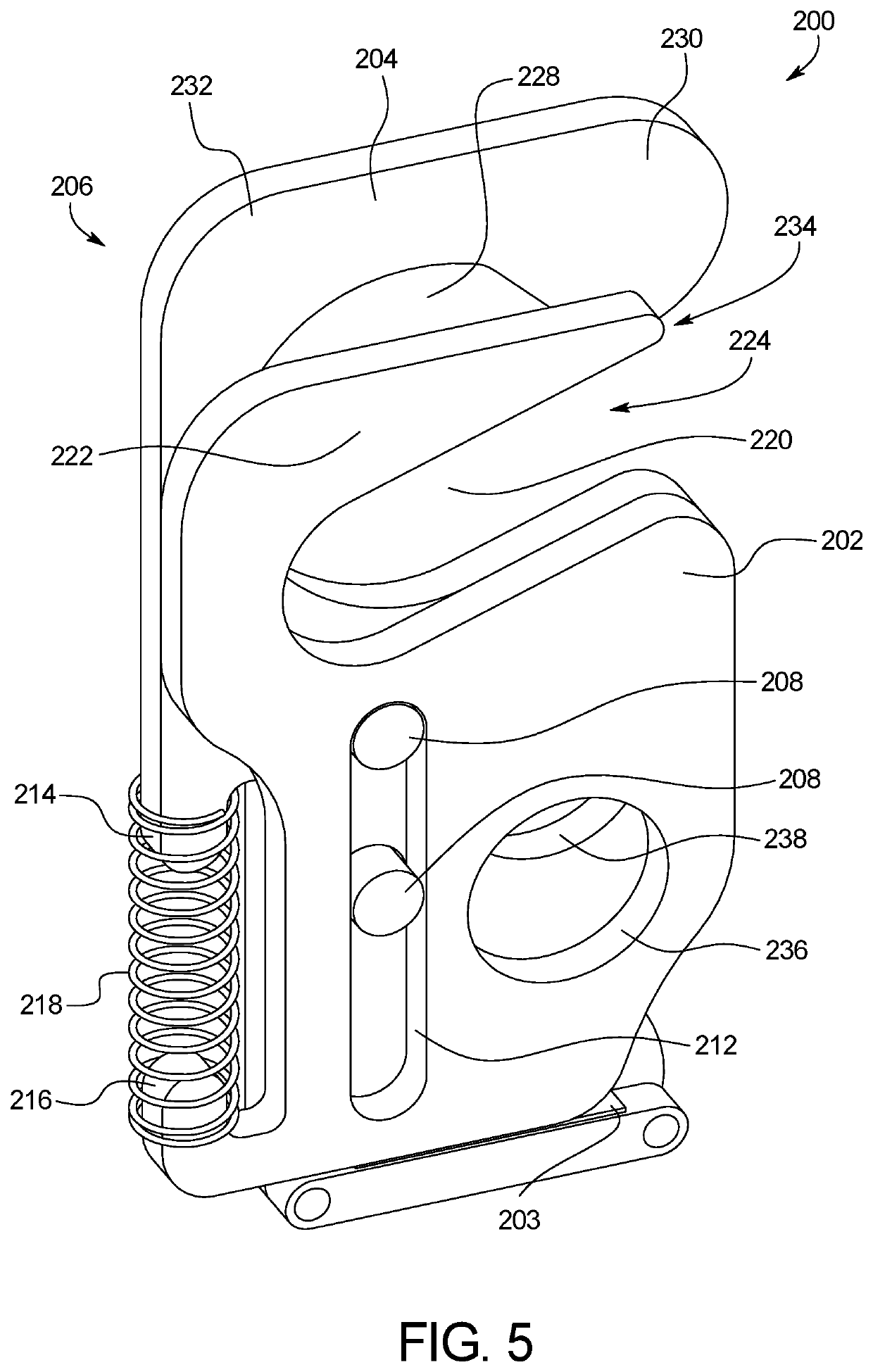Locking mechanism for tie down locking device
- Summary
- Abstract
- Description
- Claims
- Application Information
AI Technical Summary
Benefits of technology
Problems solved by technology
Method used
Image
Examples
first embodiment
[0027]FIGS. 1-4 illustrate a tie down locking device 100. In this embodiment, the tie down lockout device 100 includes a ratchet strap 102 having a ratchet body 104 that attaches to the platform 106 onto which the boat is loaded. The ratchet strap 102 is wound about a ratchet axle 108 within a rachet assembly 110, and an attachment mechanism 112 on the end of the ratchet strap 102 is secured to the transom on the boat. A locking mechanism 134 (FIG. 2) is incorporated into the ratchet assembly 110 as described in greater detail blow.
[0028]Referring to FIG. 1, the ratchet assembly 110 includes a ratchet handle 114 that is attached to the ratchet axle 108. The ratchet axle 108 is transversely mounted and rotatably supported within the ratchet body 104, and a pair of ratchet gears 116 are mounted to the ratchet axle 108. The ratchet axle 108 can be rotated by actuating the ratchet handle 114 in directions A and B. At the base of each side of the ratchet handle 114, first and second plan...
second embodiment
[0040]FIGS. 5 and 6 illustrate a tie down locking device 200. In this embodiment, the tie down lockout device 200 includes front and rear plates 202, 204 that cooperate together to move between an open position shown in FIG. 5 and a closed position shown in FIG. 6. The locking device 200 is attached to a strap 203, which is also secured to a trailer or other platform. During use the locking device 200 connects to the transom of a boat and the strap is pulled taut. The strap 203 may be secured to the tie down locking device 200 through a buckle or any type of securement means.
[0041]The plates 202, 204 are secured together using a pair of bolts, rivets, or other attachment mechanisms 208 positioned within a pair of openings 210 in the rear plate 204 and a longitudinal groove 212 in the front plate 202. The bolts 208 remain stationary on the rear plate 204 while the front plate 202 moves within the constraints of the groove 212. The front and rear plates 202, 204 also include spring pr...
PUM
 Login to View More
Login to View More Abstract
Description
Claims
Application Information
 Login to View More
Login to View More - R&D
- Intellectual Property
- Life Sciences
- Materials
- Tech Scout
- Unparalleled Data Quality
- Higher Quality Content
- 60% Fewer Hallucinations
Browse by: Latest US Patents, China's latest patents, Technical Efficacy Thesaurus, Application Domain, Technology Topic, Popular Technical Reports.
© 2025 PatSnap. All rights reserved.Legal|Privacy policy|Modern Slavery Act Transparency Statement|Sitemap|About US| Contact US: help@patsnap.com



